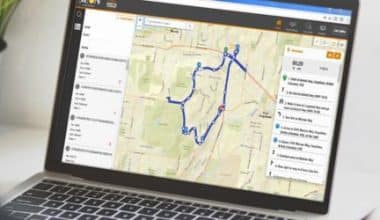Everything we do digitally, from browsing the web to making a purchase, leaves a data trail. And data analysts are always researching and scrutinizing that trail, looking for ways to use data to make better judgments. Different sorts of data are defining more and more of our online interactions, with qualitative data (QD), or data that can be described in descriptions and sentiments, being one of the most prevalent and well-known. This guide takes a deep look at what qualitative data (QD) is, some examples and tools that will help, what qualitative analysis is, and a clear comparison of qualitative data vs quantitative data. Let’s get into detail.
What is Qualitative Data?
Instead of numerical numbers, qualitative data is descriptive and expressed in terms of feelings. Because it explains the data, qualitative data analysis cannot be tallied or measured. It refers to the terms or labels used to define specific traits or attributes.
QD is information that cannot be tallied, quantified, or easily stated numerically. It is derived from text, voice, and images and is disseminated via data visualization techniques such as word clouds, concept maps, graph databases, timelines, and infographics.
The goal of qualitative data analysis is to find out what actions people take and what motivates them to do those activities. Collecting and working with this type of data can be time-consuming because it requires the analyst to reflect. However, a qualitative researcher or qualitative analyst is someone who works with QD. Many research sectors, including healthcare, business, and marketing, use (QDA) software. QD is referred to as categorical data in statistics.
Types of Qualitative Data
As we narrow down the significance of QD, you should be aware that there are several data categories. Data analysts frequently divide QD into three categories:
#1. Binary data
Binary data is represented numerically by a combination of zeros and ones. This Binary data is the only type of data that a computer can directly understand and execute. Hence, data analysts utilize binary data to build statistical models that forecast how frequently the research subject will be positive or negative, up or down, correct or wrong—on a scale of zero.
#2. Nominal data
Nominal data, often known as “named, labeled data” or “nominal scaled data,” refers to any sort of data used to label something without assigning a numerical value to it. The Nominal data is used by data analysts to discover statistically significant distinctions between collections of QD.
#3. Ordinal data
Ordinal data is QD that has been categorized in a certain order or on a ranging scale. The order of the qualitative information counts more than the difference between each category when researchers employ ordinal data. Ordinal data may be used by data analysts to create charts, while researchers may use it to categorize groups based on age, gender, or class.
Importance of Qualitative Data
QD is useful in determining the frequency of specific traits or attributes. Also, it enables statisticians or researchers to define parameters for observing larger data sets. It gives observers the ability to quantify the world around them.
QD is about people’s feelings or views and how they feel. Whereas, these views and feelings are documented in quantifiable data. It assists market researchers in understanding the language of their consumers and dealing with the study challenge successfully and efficiently.
Examples of Qualitative Data
Today, you most likely used QD. This type of data can be found in your daily job and in statistics all over the internet. Here are some examples of qualitative data in descriptions, research, work, and statistics.
Qualitative Data Examples in Descriptions
To support its theories and hypotheses, qualitative data analysis requires descriptive context. Here are some basic descriptive qualitative data examples:
- The petite woman has wavy hair and bright blue eyes.
- The small black room was pierced by a dazzling white light.
- The plump fish leaped from the clear water.
- The fluffy brown dog scaled the high white fence.
- A gentle cloud floated through a bright blue sky.
Qualitative Data Examples in Research
Analysts can construct hypotheses and models using QD research methods and contextual knowledge. These open-ended and closed-ended questions will help you understand the logic behind your motives, frustrations, and actions in any situation.
Here are a few examples of qualitative data collecting in research:
- In which country do you work?
- What was your most recent position?
- What is your search engine ranking?
- How would you rank your purchase: excellent, terrible, or outstanding?
Qualitative Data Examples at Work
Qualitative observations are used by professionals in a variety of industries in their job and study. In the workplace, examples of this type of data include:
- A manager provides constructive feedback on an employee’s abilities. “Your efforts are solid, and you have a good understanding of the product knowledge; just be patient.”
- A judge announces the verdict to the courtroom. “The man was found not guilty and is now free to go.”
- A sales employee gathers customer feedback. “The customer said the check-out button did not work.”
- An instructor provides feedback to a student. “I gave you an A on this project because of your commitment and dedication to the cause.”
- A digital marketer examines a session replay to better understand how users interact with their platform.
Qualitative Data Examples in Statistics
QD can provide valuable statistics on any sector, user group, or product. Here are some statistics examples of qualitative data set collections:
- To determine clothing size charts, use the age, weight, and height of a collection of body types.
- A census reading’s origin, gender, and location.
- The name, title, and occupation of conference attendees to help with follow-up emails.
Characteristics of Qualitative Data
QD has a wide range of qualities. There are a few characteristics that stand out amid other data that should be understood for effective data analysis.
- Descriptive: characterizing or categorizing in a nonjudgmental and objective manner.
- Detailed: to provide a detailed account in words.
- Open-ended: lacking a fixed limit or boundary.
- Non-numerical: devoid of numbers.
- Subjective: affected or based on personal feelings, tastes, or opinions.
These characteristics can help you comprehend the meaning behind the equation—or, for lack of a better term, what’s behind the results—in QD samples.
Qualitative vs. Quantitative Data
Qualitative vs. quantitative data are much different, but both contribute equally to data analysis. Hence, QD is usually numerical in nature. It can be entered into a database and examined mathematically and statistically. Quantitative data is typically structured, but QD is unstructured.
Although the information obtained through quantitative vs. qualitative data analysis can be complementary, the aims for evaluating each type of data and the tools required to acquire insight from each are distinct. A quantitative data analyst finds objective answers to inquiries regarding an event. A qualitative researcher, on the other hand, would aim to answer subjective questions about the meaning people ascribe to the same experience.
Here is the comparison between qualitative (QD) vs. quantitative data:
- QD is personalized, detailed, and emotional.
- Quantitative data is countable, measurable, and numerically connected.
- QD assists us in understanding why or how specific behaviors occurred.
- Quantitative data can tell us how many, how much, or how frequently something happened.
- QD is subjective and individual.
- Quantitative data is constant and everywhere.
- Qualitative research approaches include observations and in-depth interviews.
- Surveys and factual measurements are used in quantitative research methodologies.
- QD is studied by categorizing and categorizing the data.
- Quantitative data is analyzed using statistical analysis.
Qualitative Data Analysis
Qualitative data analysis can be classified as deductive or inductive. Analyzing your data is critical since you have invested time and money in gathering it. However, it is a necessary step since you do not want to be left in the dark after putting in so much effort. There are no hard and fast rules for assessing this data; it all starts with comprehending its two basic approaches.
Two Main Approaches to Qualitative Data Analysis
#1. Deductive Approach
The deductive qualitative data analysis approach entails examining qualitative data using a preset structure devised by the researcher. The questions can be used as a guide for data analysis by a researcher. However, this method is quick and simple, and it can be utilized when a researcher has a good sense of the probable responses from the sample population.
#2. Inductive Approach
On the contrary, the inductive QDA approach is not dependent on a preconceived structure or set ground rules/framework. It is a more time-consuming and extensive method of analyzing qualitative data. When a researcher has little or no knowledge about the investigated phenomenon, an inductive approach is frequently applied.
Best Qualitative Data Analysis Tools
And, like with anything, you can’t be effective unless you have the correct tools. Here are a few tools for qualitative data analysis that you should have in your toolbox:
#1. MAXQDA
MAXQDA is one of the data analysis tools that can do qualitative, quantitative, and mixed-method analyses. It allows you to enter data from a variety of sources, including surveys, interviews, and focus groups, to mention a few. However, this data can then be tagged and classified for analysis.
#2. ATLAS.ti
ATLAS.ti is also one of the robust qualitative data analysis software tools that can handle vast amounts of textual, graphical, audio, and video data. Unlike other software in this category, such as Quirkos, it has gradually incorporated AI technology.
#3. Quirkos
Quirkos describes itself as one of the simple software tools for analyzing qualitative data. It is inexpensive and well-liked in the educational sector. However, this is the finest option for students and academics.
#4. Dedoose
Dedoose is a completely web-based qualitative analysis tool. It was developed by UCLA researchers to examine both qualitative and quantitative data. It can import data from a variety of forms, including documents, photos, audio, video, and spreadsheets.
#5. Taguette
Taguette is a free and open-source QD analysis application that lets you tag your data before exporting it for analysis. It is great for individuals who want a simple, free way to organize their data for analysis.
What is Qualitative Data and Examples?
QD describes characteristics or attributes. It is gathered by questionnaires, interviews, or observation and is typically presented in narrative form. It may be notes collected during a focus group on the quality of cuisine at Cafe Mac, or it could be comments from an open-ended questionnaire.
What is Quantitative and Qualitative Data?
Any information that can be quantified, counted, or measured and assigned a numerical value is considered quantitative data. QD is descriptive in character and is expressed verbally rather than numerically.
What are the Three Types of Qualitative Data?
Data that can be felt or described is considered qualitative. Binary, nominal, and ordinal data are the three primary forms of QD. There are numerous sorts of QD, such as data from studies, work, and statistics.
What are 5 Examples of Qualitative Data?
Here are five qualitative data examples:
- Notes on Observations.
- Interviews that are semi-structured.
- The survey is open-ended.
- Journals or diaries kept by participants.
- Portfolios of proof.
What is Quantitative Data and Examples?
Quantitative data is information that can be counted or measured numerically. There are two kinds of quantitative data: discrete data and continuous data. Quantitative data includes height in feet, age in years, and weight in pounds.
What is the Difference Between Qualitative and Quantitative with Examples?
Quantitative data refers to numerical data and anything that can be counted or quantified. QD is descriptive, and it refers to things that may be seen but not measured, such as colors or feelings.
What is Quantitative and Qualitative Data and Give Some Examples of Both?
Quantitative information is commonly referred to as data, although it can also refer to anything other than numbers. QD entails a descriptive assessment utilizing idea words rather than numbers. Qualitative information includes things like gender, nation name, animal species, and emotional condition. Numerical quantities such as measures, cost, and weight are examples of quantitative data.
Conclusion
Collecting qualitative consumer data opens the door to a potential goldmine of growth for your company. If you know what you’re doing with it. QD reveals how your clients are feeling and what they want from you. Examining your customer’s experience (CX) and putting the consumer at the center of everything you do will almost certainly result in a higher bottom line. This guide has covered everything there is to know about the phrase.
- FORECASTING METHODS: Definitive Guide to Forecasting
- DATA ANALYSIS PROCESS: Methods, Process, And Types
- Risk Analysis: Methods, Types, Process, Examples, Pros & Cons
- Business Forecasting Definition, Methods, Examples, Types (Updated)
- MARKET RESEARCH METHODS: Top 10 Effective Research Methods For Any Business
- WEBSITE TRAFFIC ANALYZER: Top 20+ Free Tools in 2023






